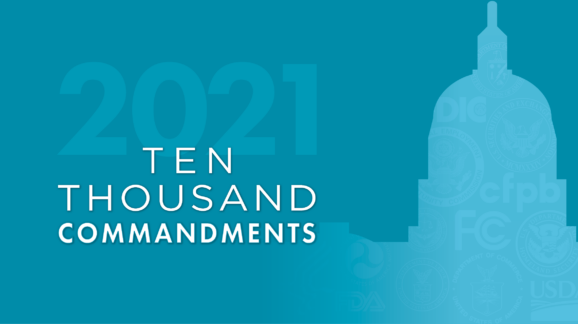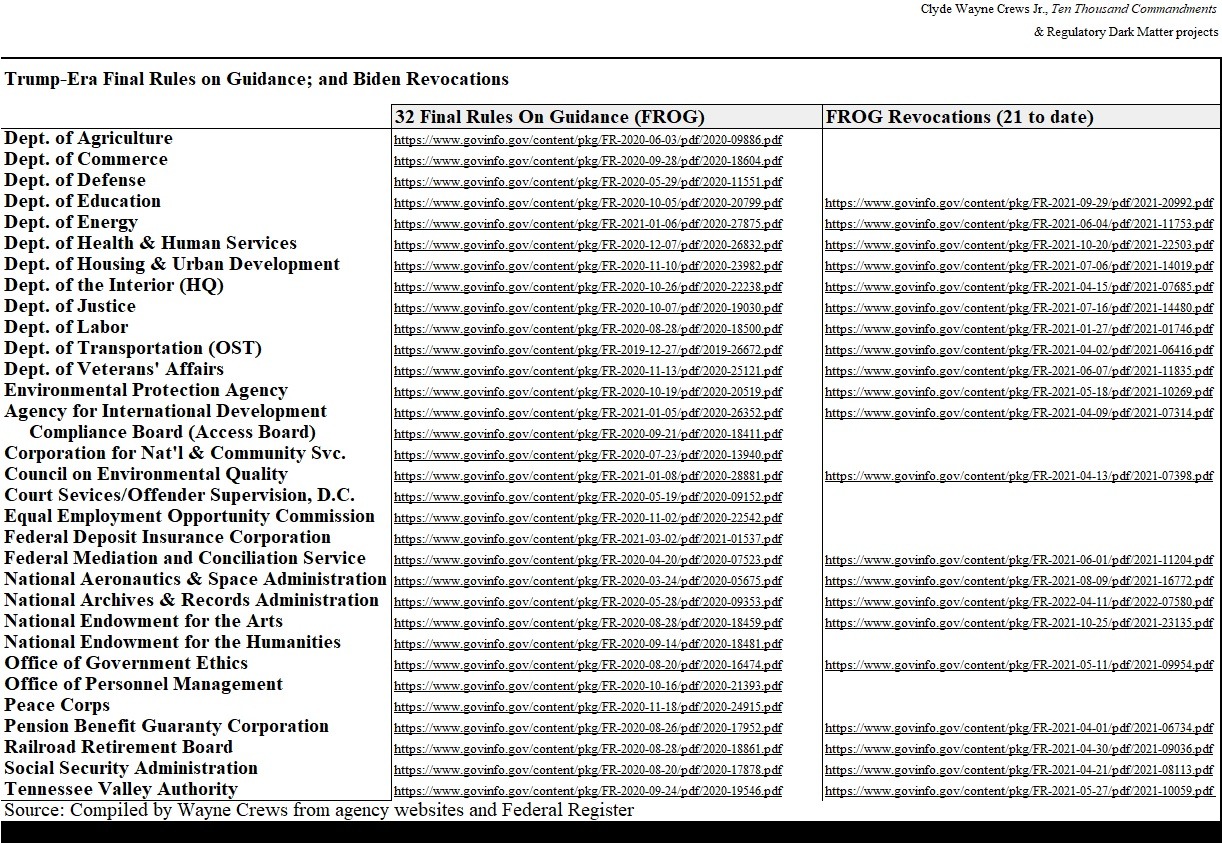Stomping FROGs: An Updated Inventory of Biden’s Elimination of Trump-Era Final Rules on Guidance Document Procedures

Photo Credit: Getty
Since President Obama unleashed the pen and phone, federal agency guidance documents and the confusion and abuse surrounding them has been covered extensively. Remedies within the executive branch and urgent legislative correctives have been detailed in recent years and months.
Like federal spending, regulatory dark matter has escalated in the wake of the pandemic-boosted expansion of federal laws and regulations, along with executive actions like rent moratoria and vaccine mandates. Now, just when the crisis passion should be subsiding and steps taken to prevent future overreactions to crises, President Biden has undertaken a “whole of government regulatory campaign and is threatening an emergency declarations on the climate crisis.
Much of the societal micromanagement unfolding will operate not by laws nor even regulations, but by guidance, decrees, administrative interpretations, bulletins, letters and the like.
It ought not have turned out this way. The mild set of disclosure and principles in place since 2007 under President George W. Bush were tightened by Donald Trump’s 2019 Executive Order 13891,“Promoting the Rule of Law Through Improved Agency Guidance Documents.”
The Trump order directed agencies to establish one-stop portals for their guidance documents, as well as construct a formal notice-and-comment rulemaking establishing internal guidance policies and practices on which the public could rely—a Final Rule on Guidance (FROG). By September 2020, I’d looked at the agencies’ efforts and compiled a portal of portals containing links to over 73,000 documents.
But Biden’s regulatory “modernization” has shredded that and more. Biden’s January 20, 2021 Executive Order 13992 on “Revocation of Certain Executive Orders Concerning Federal Regulation, struck Trump’s E.O. 13891 and “directed federal agencies to take steps to rescind any rules or regulations implementing or enforcing EO 13891.”
Residues of guidance document portals remain, though, with tens of thousands of documents still accessible. My new inventory underway, to be elaborated upon in a forthcoming post, tops 100,000. Ongoing roundups and snapshots like these are necessary, with the Biden White House having eliminated the “Deregulatory” designation for rules and regulations that was implemented under Trump.
The Environmental Protection Agency (EPA), for example, made it relatively easy to find 9,811 of its guidance documents, but now, those portals have been removed, as can be seen on my spreadsheet inventory noted above. Each EPA subagency’s one-time portal now redirects to a page declaring, “Sorry, but this web page does not exist.”
The “regulations.gov” site the EPA invokes above will not going to provide the transparency of sorts that once briefly existed. Other departments and agencies will be equally happy to oblige Biden. Therefore the ongoing inventories.

In addition, to providing a point of reference or anchor for forthcoming guidance inventories, I present below (and at https://bit.ly/3J7FQzt) a roundup of those agencies that, in response to Trump, did indeed issue a Final Rule on Guidance. By my count, 32 departments and agencies, including some independent agencies, issued final rules establishing guidance practices. However, 21 of those departments and agencies have issued rules rescinding those disclosures. Those will be updated as any changes occur. (Transparency and fairness in civil enforcement actions are also being revoked by agencies but are not tallied here.)
The past two years have brought into renewed focus the shortcomings of attempts to streamline regulation by an executive branch acting alone, as opposed to presidential success at expanding the federal state by acting alone. “Acting alone” now too often means unilateral emergency declarations on this or that “clear and present danger.”
So, to counter the emergency declarations of an overreaching executive branch, offsetting emergency legislation is needed, from an Abuse of Crisis Prevention Act to legislative reform and rollback of rule by guidance. Upon constraining agencies, we should also require that Congress restrain itself, given the torrent of mega-legislation ranging from multiple coronavirus bills to the bipartisan infrastructure and “competition” bills. Restraining regulatory dark matter, executive orders, and abuse of emergency declarations need to be our bridge to restraining hyper-spending and hyper-regulatory lawmaking as well.